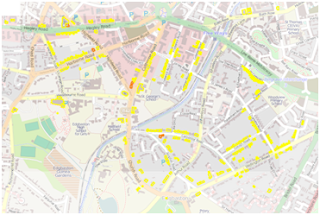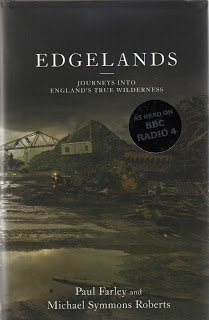Our February meetup took place in a new venue – the Crown Inn on Newton Street opposite the Crown Court. The beer and the food are cheaper (especially the BOGOF* on desserts) and no less good and there’s more room. The only drawback is there’s no wifi. It’s also closer to the main rail stations. So it’s our new permanent venue until we go visiting around the region again from May onwards to take advantage of the light evenings and surveying time.
We had a good turnout of seven: Steve and Ian from Worcesterhire; Pete from Warwickshire and the old regulars – Mike, Brian, Andy and Andrew.
What most exercised us was the remapping effort, with our region being particularly troubled by one local contributor who had been a keen mapper and is unlikely to agree to the new CTs. Coventry and the Malverns were two particularly hard hit areas. Another was Kingswinford, where there had been no response from the mapper involved. We felt we would be in good shape by April 1st as most of the motorways, trunk , primary and secondary roads were now clean.
We will pay special attention to Warwickshire where Pete informed us about the plans the County Council has to use OpenStreetMap. More about that when it’s fully live and public. Pete was keen to see if there was a means by which map features generated in OpenLayers could be edited into OSM automatically.
There were different opinions about the sprouting of a continuous stream of “HS2” text strings along the route of the proposed HS2 London-Birmingham High Speed Train route on the main Mapnik render. It was a good indicator of where the route went without examining the layer which had the detailed layout of the proposed route; but it was not good cartographic style to have the name of a proposed feature which is still at least 15 years away from completion cluttering up today’s map. This raised a more general point with Mapnik rendering names of all kinds of features not present on the ground which clutter up the map (e.g. Parish and Ward boundaries in urban areas).
We all decided to participate, even if it was only for a few hours, in the Night of the living Maps on February 7th. Those of you who couldn’t attend at the Crown Inn are encouraged to join in. Hope we don’t get too many editing clashes
Andrew wanted people to know about a grant initiative for the developing world, details of which can be found here http://api.ids.ac.uk/about/grants.shtml Andrew had found it on the open data development mailing list which gives all the background. Deadline 13th February, but they have said there will more grants like this in future.
Andrew is still travelling around Warwickshire mapping and cataloguing allotments so we can build on the West Midlands data set which is mapped (roughly!) here as part of our collaboration with http://allotmentdata.org/
Steve had been busy mapping the Parishes in Worcestershire and has kindly provided the data in a usable form for us to complete the West Midlands. We shall get cracking in earnest on this once the remapping is under control, although we’re a little hesitant about “name clutter” – see above.
We discussed what to do with the FOI request which had revealed the Marketing Birmingham ( a public organisation) had spent over £80,000 drawing a map from aerial imagery, where with a little collaboration with us, would have cost a mere fraction of that.
We still haven’t had a reply from Centro about the City Centre reconfiguration of bus stops and road direction changes to make way for the proposed Metro extension. Work has started already on the ground reconfiguring Moor Street Queensway. Andy said he would add the proposed Metro route extension to the map.
We went through our change register to see what needed updating. We also discussed how to improve it to make it more usable, by having links to the map for each change; and by eventually having every piece of brownfield land logged.
We didn’t get round to discussing the Jewellery Quarter tourist walking route which Andy M had pointed out was missing by email and for which there was some dispute as to whether it’s actually waymarked on the ground. Even though several of us have surveyed the area no-one could remember distinctly seeing waymarks but then we probably weren’t looking for them! Sorry Andy!
We now have an up to date list of all the taxi ranks from Birmingham City Council which will be a great aid in future surveys and also to jog some memories about past surveys. Expect to see more taxi ranks soon on the map.
We looked nostalgically at the paper map Andy produced in December 2009 to celebrate what we thought was a complete map of the area inside the M6-M5-M42 motorway ring. Complete? How wrong we were! But as we looked at the map on the table and reminisced that all the roads (except the motorways) had been surveyed by bicycle or foot with GPS devices with no aerial imagery to help us, we realised what a great achievement it was. So …. we thought what a great idea it would be to produce another paper map for December 2012 if we could raise enough funds, particularly as we think we might have every building mapped within the Birmingham City Council borders mapped by then. If anyone wants, for historical purposes, a copy of the 2009 map, contact Blackadder.
*for non-UK readers BOGOF Buy One Get One Free


